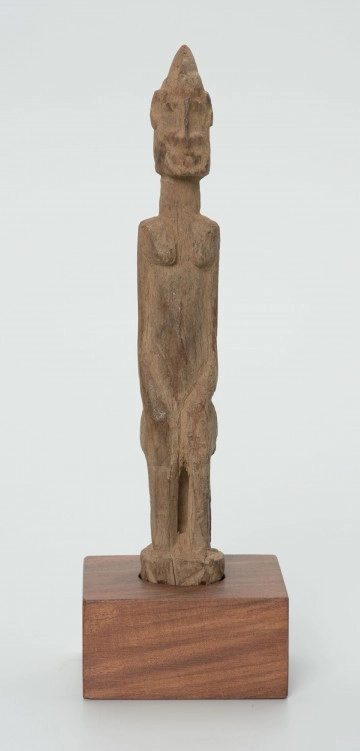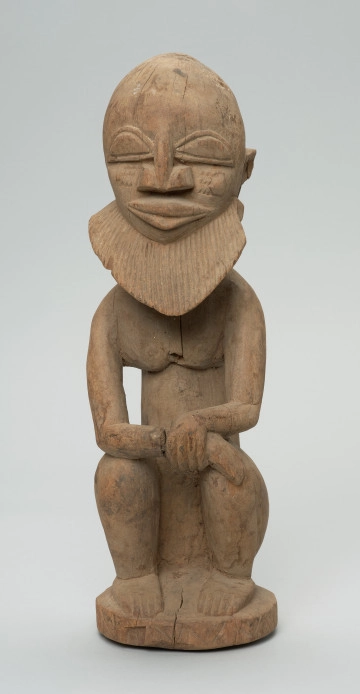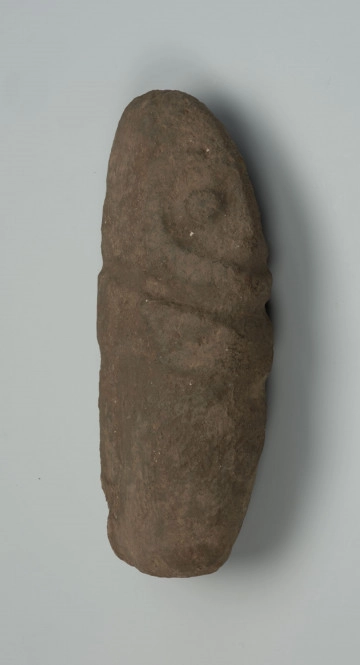
Figurine - ancestor
między 1901 — 1950
National Museum in Szczecin
Part of the collection: Collection of Dogonian art
The Dogon are a people living in the Republic of Mali. The basis of their economy is hoe-farming. Many of the Dogon annual rituals are connected to ensuring a good harvest. To this end, they thank the god Amma and their ancestors for a good harvest and ask for blessings for the coming field season. The two most important festivals in the agricultural calendar are Goru and Bulo, during which the priests of both cults of life - Hogon (priest of the Lebe cult) and Binukedine (priest of the Binu cult) - cooperate. Bulo is called the festival of sowing. Its essential element is the offering of sacrifices on the wagem altars dedicated to the ancestors of the family, on the doors of the houses and on the Lebe altars. A few days later, a pulp made of grains from double ears of millet mixed with water is offered to Yebans. These are mythical beings who live in the bush. They are considered the first owners of cultivated land and guardians of the twins. The offerings made to them are supposed to ensure an abundant harvest. The importance of these sacrifices is shown by the fact that every year, before the harvest, stalks of yu gine (double millet) are collected and kept in special vessels by the patriarchs of the ginna bana families until sowing.The Bulo festival lasts three days. It begins with the offering of sacrifices - mush made of millet mixed with water, konyo beer, hens and rams. Each offering is accompanied by a prayer in which the Dogon ask Amma for a successful harvest and good health to work hard and survive the following year. They then ask for blessings for the dead and the living, for women, crops and livestock. The meat of the sacrificed animals and the cake made of new millet are then consumed by the patriarchs and the twins. The ceremony ends with the drinking of local konyo beer together.
Ewa Prądzyńska
Author / creator
Dimensions
cały obiekt: height: 26 cm, width: 5 cm
Object type
figure
Creation time / dating
Creation / finding place
Identification number
Location / status

między 1901 — 1950
National Museum in Szczecin

między 1951 — 2000
National Museum in Szczecin

między 1951 — 2000
National Museum in Szczecin
DISCOVER this TOPIC
Castle Museum in Łańcut
DISCOVER this PATH
Educational path